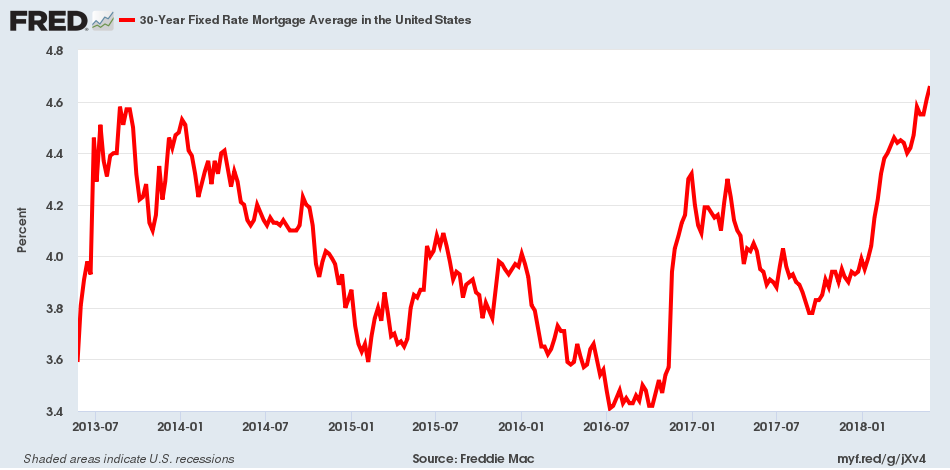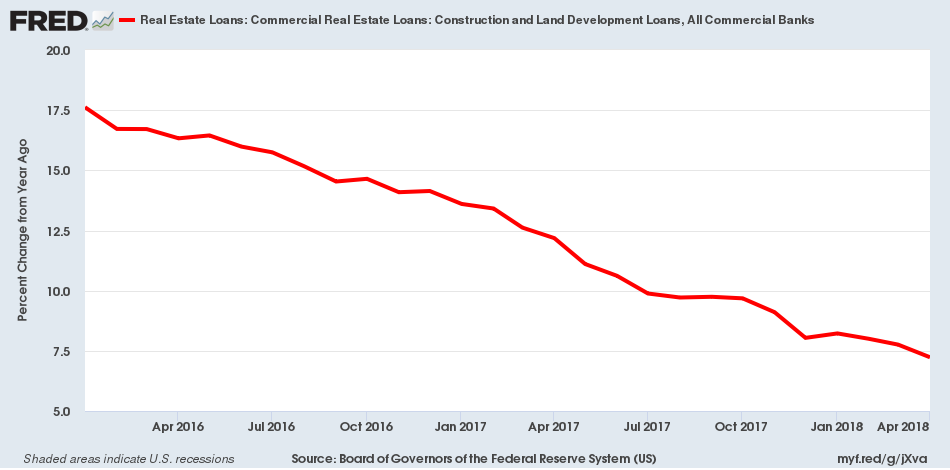Housing Market Could Become the Biggest Victim of Higher Interest Rates
Fact: interest rates are going higher.
Investors beware. Put simply, as interest rates move higher, things could get really ugly for the U.S. economy.
There’s one victim of higher interest rates already emerging: the U.S. housing market.
Look at mortgage rates. The 30-year fixed rate mortgage stands at 4.66%, which is its highest level in five years:

(Source: “30-Year Fixed Rate Mortgage Average in the United States,” Federal Reserve Bank of St. Louis, last accessed May 24, 2018.)
You see, mortgage rates are directly correlated with interest rates. Since rates are expected to go higher, you can almost bet that mortgage rates will rise as well. This 4.66% figure could go much higher.
This could have dire consequences for the U.S. housing market. We are seeing home sales decline already. In April, sales of existing (already built) homes declined 2.5% from a month earlier; they were down 1.4% from a year ago. This was also the second consecutive year-over-year monthly decline.
Housing affordability is already taking a hit. Lawrence Yun, the chief economist at the National Association of Realtors, said while reporting existing home sales figures in the U.S., “With mortgage rates and home prices continuing to climb, an increase in housing supply is absolutely crucial to keeping affordability conditions from further deterioration.” (Source: “Existing-Home Sales Slide 2.5 Percent in April,” National Association of Realtors, May 24, 2018.)
Don’t forget that the housing market is an integral part of the U.S. economy. If more homes are being sold, it gives a boost to consumption and, ultimately, the U.S. gross domestic product (GDP).
Commercial Real Estate Construction Could Be Stalling
As interest rates have gone higher, growth in construction and land development loans have taken a hit as well.
Look at the chart below. It shows the year-over-year percentage change in commercial construction and land development loans:

(Source: “Real Estate Loans: Commercial Real Estate Loans: Construction and Land Development Loans, All Commercial Banks,” Federal Reserve Bank of St. Louis, last accessed May 24, 2018.)
In early 2016, the loan amount was growing at around 17.5%. Now, it’s 7.2%. That’s a deceleration of close to 60%.
Why does this figure matter?
Usually, companies borrow money to start new construction of an office building, factory, or a plant. If the commercial loan amount is decelerating, it says that commercial construction may not be as strong either. That is not good.
Where’s the U.S. Economy Headed Next?
Dear reader, it’s critical to keep in mind that the Federal Reserve is taking the punch bowl away from the party (low interest rates).
As we move toward higher rates, victims are emerging very quickly. They shouldn’t be overlooked. It’s important to think about what kinds of impacts we could see with higher interest rates.
As homes become less affordable in the U.S., will home prices decline? And, what will happen to home builders? They could see their stock prices plummet.






